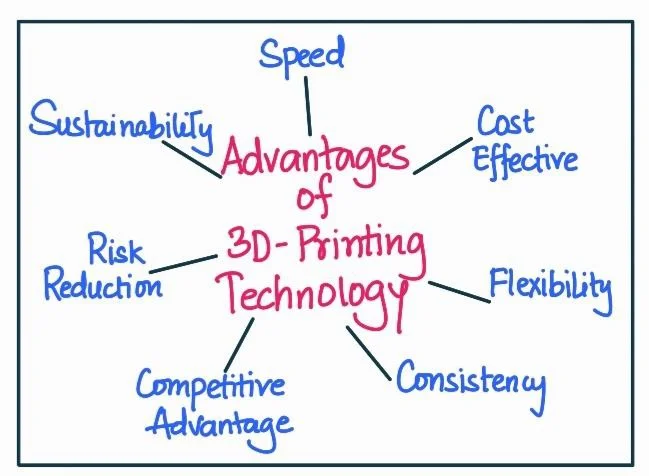Answer:
| Approach:
Introduction
- Begin with a brief definition of 3D printing and a general description of how the technology works.
Body
- Explain in more detail the three main steps involved in 3D printing: designing, slicing, and printing.
- Discuss the main advantages of 3D printing.
- Transition into the key limitations or disadvantages of 3D printing.
- Provide real-world examples that illustrate the use of 3D printing in India.
Conclusion
- Conclude by summarizing the potential impact and future implications of 3D printing technology, taking into account both its advantages and disadvantages.
|
Introduction:
3D printing, or additive manufacturing, is a technology that creates three-dimensional objects from a digital file. It works by laying down successive layers of material until the object is fully formed.
Body:
Working of 3D Printing Technology:
- Designing: The process begins with designing a 3D object using a Computer-Aided Design (CAD) software.
- Slicing: The 3D model is then sliced into hundreds or thousands of horizontal layers using slicing software.
- Printing: The 3D printer reads the sliced files and successively deposits layers of material to create the 3D object.

Advantages of 3D Printing:
- Customization: It allows for easy customization of designs. For example, in India, 3D printing is being used to create personalized prosthetics.
- Reduced Waste: 3D printing only uses the material needed to create the object, minimizing waste.
- Speed: It can significantly reduce the time taken from design to product, useful in rapid prototyping.
Disadvantages of 3D Printing:
- Limited Materials: While advancing, 3D printing still has a limited range of materials that can be used, especially in comparison to traditional manufacturing methods.
- Size Limitations: Current 3D printers are restricted in the size of the objects they can produce.
- Quality: The surface finish and structural properties of 3D printed parts can sometimes be inferior to those produced by traditional methods.
A few examples:
- Healthcare: In India, 3D printing has been used to create cost-effective and customized prosthetics, revolutionizing patient care.
- Construction: There have been efforts towards 3D printing of houses in India, which promises faster and affordable construction.
Conclusion:
While 3D printing is an innovative technology that offers numerous benefits, it also has its limitations. As the technology continues to advance and become more accessible, its potential applications in diverse sectors, including healthcare, manufacturing, and construction, can bring significant changes to the Indian market.
